Looking for a new secret weapon to add to your culinary arsenal? You’re in luck! Today I’m going to show you how to make vanilla sugar 4 different ways so you can give any of your favorite coffee, cocktail, or baking recipes an easy glow-up. Best of all, you only need 2 ingredients and about 5 minutes of active kitchen time to make it. As a bonus, I’ve also included a free printable for my custom vanilla sugar labels!
Have you ever noticed that pretty much every dessert recipe calls for vanilla in some form? Whether it’s for cake, cookies, brownies, pie, or ice cream, the warm, aromatic touch of vanilla feels like a pre-requisite for making sweet treats and other baked goods.
Several years ago, I realized that there’s another option - beyond the typical vanilla extract - for adding this classic flavor to my favorite recipes: vanilla sugar! Made by infusing vanilla into granulated sugar (another ubiquitous baking ingredient), it instantly gives your desserts another layer of subtly sweet, floral vanilla flavor. Keeping a jar of this DIY vanilla sugar on the counter has been a serious game-changer in my kitchen.
And it doesn’t just stop at desserts! You can use it in everything from your morning coffee to your happy hour cocktails and just about any other recipe that uses sugar. Since I love you all and want you to experience the deliciousness of this vanilla-flavored sugar first-hand, I’ve created not one, not two, but FOUR different vanilla sugar recipes for you to try. So, whether your kitchen equipment game looks like it belongs to a master chef or a college student, as long as there’s a will, there’s a way!
Why You’ll Love This Homemade Vanilla Sugar Recipe
- Quick & Easy - All you need are 2 ingredients and a few minutes of active time to make a batch. And, depending on the method you use, once it’s made, you can keep replenishing the sugar for several months so you have a constant supply!
- Accessible - My favorite method for making vanilla sugar uses a food processor and whole vanilla bean pods. But I know that not everyone has access to either the expensive equipment or spendy vanilla beans. Because of this, I’ve figured out how to make vanilla sugar with vanilla extract, paste, powder, AND pods so everyone can get in on the fun!
- All-Purpose - In nearly every recipe that calls for sugar, you can swap in an equal amount of this enchanting vanilla bean sugar for a little extra flair. It's an incredibly versatile ingredient!
Jump to:
Recipe Ingredients

As promised, you only need 2 ingredients to make this recipe for vanilla sugar. I’d bet you can guess what they are, but as always, there's nuance:
- Granulated Sugar - Plain white sugar is neutral in flavor, meaning the complexity of vanilla can truly shine. You can also use raw cane sugar, or any other sugar/sugar-substitute of your choosing from the “Optional Variations” section below.
- Vanilla - When it comes to adding vanilla flavor, there are LOTS of options:
- Beans/Pods - Using whole vanilla pods and their seeds will give you the most potent vanilla flavor while keeping your sugar a crisp white color. Plus, you’ll see those stunning vanilla bean flecks that give this sugar a sort of “artisan” feel. This is - in my opinion - the best option!
- Powder - Ground vanilla beans, often referred to as vanilla bean powder, are a great option if you want the visual effect of the vanilla seeds, but don’t want to deal with the whole pod. The caveat is that, like other spices, pre-ground vanilla will lose potency faster than whole vanilla, so keep this in mind if you decide to purchase it. You can use 1 teaspoon of ground vanilla in place of the 2 vanilla beans called for in this recipe. Don’t get ground vanilla beans confused with vanilla powder, which is a white, powdery mixture of vanilla extractives and dextrose that I don’t recommend using here.
- Paste - I LOVE vanilla paste because it has the convenience and similar price-point of vanilla extract, but also has those vanilla specks I find so charming. This is my second-favorite form of vanilla to use in this recipe. That said, it will give your sugar a light golden tint, and because it adds moisture to the sugar, there’s additional time required to let the sugar dry out.
- Extract - Vanilla extract, like paste, will add both color and moisture to your sugar, so keep this in mind. If you go with this option, make sure to use pure vanilla extract, NOT vanillin (artificial vanilla flavor). You have choices here too! Bourbon vanilla extract has a rich, oaky undertone, whereas “regular” vanilla extract is made with neutral-flavored vodka.
A Note About Different Types Of Vanilla
Depending on where you shop, you may be able to choose between different vanilla varieties. There’s Madagascar vanilla, which boasts a rich and creamy flavor profile; Mexican vanilla, which has a dark, smoky undertone; Tahitian vanilla, which skews more floral; chocolatey Indian vanilla; mild Indonesian vanilla; and earthy, fruity Tonga vanilla. Have fun experimenting with different types to find your favorites!
In addition, if you opt to make this recipe with vanilla beans, you'll find that you have a choice between grade A beans and grade B beans. The difference between vanilla bean grades lies in their plumpness, moisture, and aroma. While you can use grade B vanilla beans to make vanilla sugar, you'll likely get more seeds (caviar) and better flavor from the grade A beans due to their higher moisture content.
How to Make Vanilla Sugar — 4 Easy Ways
Option 1: With Whole Vanilla Beans (Preferred)
Step 1: Blitz. In a food processor fitted with the steel blade attachment, combine granulated sugar with the vanilla bean seeds scraped from two whole pods. (Use a sharp knife to cut them in half before removing the seeds, and set the spent pods aside for step 2.) Process until the vanilla is fully and evenly incorporated into the sugar.


Step 2: Store in an airtight container, adding the now-empty pods (cut in half if needed) before covering with a lid. For the best, most potent flavor, set aside for at least 2 weeks before using.

Option 2: With Vanilla Bean Paste or Vanilla Extract
Step 1: Blitz. In a food processor fitted with the steel blade attachment, combine granulated sugar with vanilla bean paste or vanilla extract. Process until the vanilla is fully and evenly incorporated into the sugar. Making vanilla sugar with extract or paste means the sugar will get a bit clumpy due to the moisture — this is normal.


Step 2: Dry. Spread the sugar out in a thin, even layer on a baking sheet. Add a piece of parchment paper for easy cleanup if preferred. Let it dry for several hours or overnight; the sugar will harden once dry. The bonus here is that your kitchen will smell like a warm vanilla sugar candle!

Step 3: Blitz & Store. Use the tip of a flat spatula to break the sugar into small pieces. Transfer it back to the food processor and process until all clumps are gone and the mixture has returned to the texture of standard granulated sugar. Store in an airtight container. Feel free to use immediately.


Option 3 (Equipment-Free): With Ground Vanilla
Don’t have a food processor? Not to worry. You still have options!
Step 1: Mix sugar with ground vanilla beans in a container until well-combined. You can use this immediately, but again, it will taste best if you cover it and let it sit for at least 2 weeks so the sugar has time to take on more of the vanilla flavor.
Option 4 (Equipment-Free): With Whole Vanilla Beans or Spent Vanilla Pods
Wondering how to make vanilla sugar quickly? This is as quick and easy as it gets. For an simple, albeit slightly less potent, vanilla flavored sugar:
Step 1: Add whole, fresh vanilla beans or the (dry) spent pods of two vanilla beans that were used for another purpose (like homemade vanilla ice cream) directly to granulated sugar in an airtight container. (See “Recipe Tips” below for notes on using spent pods.)
Step 2: Infuse. Let sit for at least two weeks before using to allow time for the vanilla to infuse the sugar.
Step 3: Replenish the container with fresh sugar as you use it.

Optional Variations & Dietary Adaptations
- Sugar-Free Vanilla Sugar - Substitute granulated sugar with an equal amount of your favorite granulated sugar alternative, such as monk fruit or erythritol.
- Coconut Vanilla Sugar - Similar to the variation above, you're welcome to use coconut sugar in place of granulated sugar for an option that's refined sugar-free.
- Vanilla Powdered Sugar - Follow this recipe using the first food processor method above, but add an additional tablespoon of corn starch per cup of sugar and process until the sugar is fine and powdery. You can also simply use powdered (confectioner’s) sugar instead of granulated sugar, and process just until the vanilla bean seeds are incorporated. For this method, I would only recommend using whole vanilla beans or ground vanilla bean powder, since the moisture from vanilla extract or paste would likely throw off the consistency of the powdered sugar.
- Vanilla Cinnamon Sugar - When making your vanilla sugar, add anywhere from 2 to 4 tablespoons of ground cinnamon per cup of granulated sugar, depending on how much cinnamon flavor you want!
- Vanilla Brown Sugar - Start with brown sugar instead of granulated sugar, or add 1 ½ teaspoons of molasses per cup of granulated sugar along with the vanilla. Process until both the molasses and vanilla are fully incorporated, using a rubber spatula to scrape down your food processor as needed. As with the powdered sugar variation, I don’t recommend using vanilla extract or paste for this option since brown sugar already has extra moisture.
Storing Instructions
- Vanilla sugar will keep well in an airtight container for 2 years, if not longer. To help ensure its longevity, store it in a pantry or other cool, dark place.
- If you used the quick and easy method of simply adding whole or scraped vanilla pods to your sugar, you can continue to add more sugar to the jar for up to 1 year. If the pods start to lose their fragrance, this is a good sign that it may be time to swap them out.
- To preserve your vanilla-infused sugar for longer and prevent clumping, consider tossing a packet of silica into your jar to keep things nice and dry. Just don’t accidentally add the packet to any recipes!

Recipe Tips
- Some people like to blend up the whole vanilla pod with the seeds and sugar. While you’re welcome to do this, I prefer just adding the empty pod to the sugar at the end so you don’t have to worry about it blending in completely, since the pod can be a bit "tough".
- If you use spent vanilla pods from another recipe where they were combined with something wet (like ice cream or custard), make sure you give them time to dry out completely first. I wouldn’t recommend using spent pods that were in contact with another strong flavor (e.g. chocolate pudding), unless you don’t mind another layer of flavor in your sugar.
- Make use of your appliances! I don't recommend using just elbow grease to mix the sugar with fresh vanilla seeds, vanilla paste, or vanilla extract, since the moisture makes it hard to mix evenly. A food processor works better and makes the job easier. A blender would likely work as well!
- For a small batch, you can also use a clean coffee grinder or spice grinder to mix your vanilla sugar.
- If you find vanilla sugar clumps in your container after storing, just give the sugar a quick stir with a spoon to smooth it out again. This is more likely to happen if you add the vanilla pod to your sugar before letting it dry out, since the pod retains a bit of moisture.
- Gift it! Homemade vanilla sugar can make a great gift; all you need to do is put it in a nice glass jar and add a cute label. I’ve made custom labels you can print out for this very reason!

How To Use Vanilla Sugar
Vanilla sugar makes everything it touches feel a little extra special. While it can be used in a 1:1 ratio with regular sugar for nearly any recipe, here are some of my favorite ideas to get you started:
- Coffee Glow-Up: I love using vanilla sugar to make my morning lattes! You can also use it in the flavored simple syrups for my lavender iced coffee and mint iced coffee.
- Whipped Cream: Sweeten homemade whipped cream with vanilla sugar instead of plain sugar to add a little extra flavor to your desserts. For whipped cream recipes that call for powdered sugar (like my dairy free whipped cream or chocolate whipped cream), try using vanilla powdered sugar (listed under the “Optional Variations” heading in this post).
- Cocktail Rims: If you have a favorite cocktail that calls for a sugar rim, use vanilla sugar! It would be a great addition to this sweet-tart raspberry limoncello cocktail.
- Vanilla Sugar for Baking: I have a number of recipes with vanilla sugar for you to try! I use it in my tangy kumquat cake, vanilla bean scones, vanilla bean biscotti, vanilla ruffle cakes, and funfetti cake. It works especially well in recipes with lighter flavors where the vanilla can really shine.
Recipe FAQs
Vanilla sugar is simply sugar that's been infused with a touch of sweet vanilla flavor - typically from whole or ground vanilla beans, vanilla paste, or vanilla extract. Some vanilla pastes or extracts contain trace amounts of alcohol, but it’s so small that it’s practically negligible. If the sugar is heated when used in a recipe (for example, by being baked in the oven), this miniature amount of alcohol should evaporate in the process.
The easiest (and most straightforward) substitute for vanilla sugar is to just use granulated sugar and the vanilla flavoring of your choice (e.g. vanilla extract, beans, or paste).
No, not quite. Icing sugar, also known as powdered sugar or confectioner’s sugar, is a sweetener made from granulated sugar and starch (typically corn starch) that’s been processed until fine and powdery. You can make powdered vanilla sugar if you'd like — the instructions are in the “optional variations” above. Then, feel free to use it as you would regular powdered sugar, but with a boost of delicious vanilla flavor!
While vanilla sugar will impart flavor into your recipes like vanilla extract does, I find that it tends to be a bit more subtle. That said, if you have a recipe that calls for both granulated sugar and vanilla extract and all you have is vanilla sugar, I would definitely recommend using it!
Sugar doesn’t expire, so it’s highly unlikely that your homemade vanilla sugar will go bad. In fact, sugar is a preservative! To help ensure it stays fresh for as long as possible, consider storing your vanilla sugar without the vanilla pod, since vanilla beans do expire.
More Ways to Use Vanilla Sugar
Raise the bar on your baking - make any of these recipes with vanilla sugar in place of standard granulated sugar for even more deliciousness!
Homemade Vanilla Sugar
Learn how to make vanilla sugar at home with any form of vanilla you have on hand. My easy vanilla sugar DIY recipe includes 4 different methods using your choice of vanilla beans, vanilla extract, or vanilla paste. Plus, download and print a set of my free custom labels to make your jars of vanilla sugar look like they came from a specialty store!
- Prep Time: 5 minutes
- Total Time: 5 minutes
- Yield: 2 cups 1x
- Category: how to
- Method: food processor
Ingredients
- 2 cups (397 grams) granulated sugar
Vanilla (use one of the following):
- 2 fresh vanilla beans
- 1 tablespoon vanilla bean paste
- 1 tablespoon vanilla extract
- 1 teaspoon vanilla bean powder
Instructions
Food Processor Method Using Whole Vanilla Beans:
- In a food processor fitted with the steel blade attachment, combine granulated sugar with seeds from the two vanilla beans. Process until the vanilla is fully and evenly incorporated into the sugar.
- Transfer vanilla sugar to an airtight container, adding the pods (cut in half if needed) before covering with a lid. For the best flavor, store for at least 2 weeks before using.
Food Processor Method Using Vanilla Bean Paste/Extract:
- In a food processor fitted with the steel blade attachment, combine granulated sugar with vanilla bean paste or vanilla extract. Process until the vanilla is fully and evenly incorporated into the sugar. The sugar will get a bit clumpy - this is normal.
- Spread sugar out on in a thin, even layer on a large baking sheet. Let dry for several hours or overnight; the sugar will harden once dry.
- Use a flat spatula to break the dried sugar into pieces and transfer it back to the food processor. Process until all clumps are gone and the mixture has returned to the texture of standard granulated sugar. Store in an airtight container. Feel free to use immediately.
Equipment-Free Method Using Vanilla Bean Powder:
- Combine sugar with ground vanilla beans in a container, mixing with a spoon until the powder is evenly dispersed. For the best flavor, store in an airtight container for at least 2 weeks before using.
Equipment-Free Method Using Vanilla Bean Pods:
- Add whole, fresh vanilla beans or the (dry) spent pods of two vanilla beans that were used for another purpose directly to granulated sugar in an airtight container.
- Let the sugar sit for at least two weeks before using to allow time for the vanilla to infuse the sugar.
- Replenish the container with fresh sugar as you use it.
Notes
Ingredient Notes:
- This recipe can also be made with unrefined sugar, such as coconut sugar, or raw cane sugar, or a sugar-free alternative such as monk fruit or erythritol.
- Grade A vanilla beans are best for this recipe. Feel free to experiment with the variety of vanilla used (Madagascar, Tahitian, etc.).
Storage and Shelf Life Notes:
- Vanilla sugar will keep well stored in an airtight container in a cool, dark place for at least 2 years.
- Vanilla sugar made using the equipment-free method with vanilla bean pods can be replenished with fresh sugar for up to 1 year before the pods should be replaced. Don't throw them out! You can still use them in a recipe.
- To prevent clumping during storage, allow vanilla bean pods to dry out before adding to your sugar. You can also add a packet of silica to the jar if desired.
Have you made this recipe?
If so, I'd love to hear your feedback; you can leave a rating and review in the comments section below! It's also so helpful if you help spread the word by sharing this post on your favorite social media channel. If you happen to snap a photo of what you've baked, be sure to share it on Instagram and tag me (@brighteyedbaker) so I can give you a shoutout!


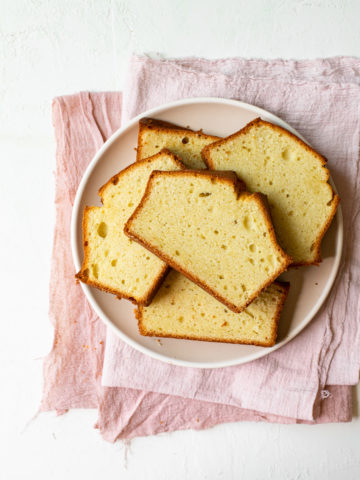
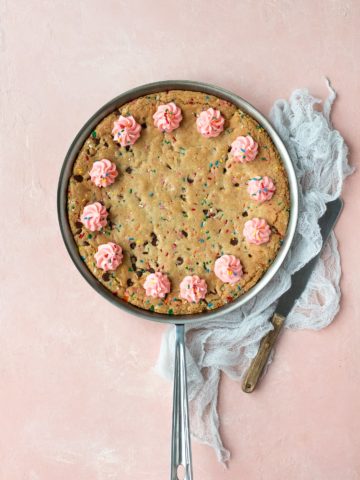
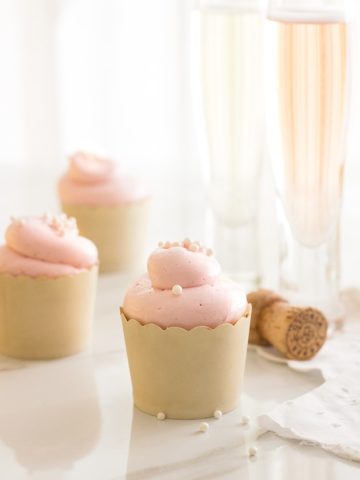
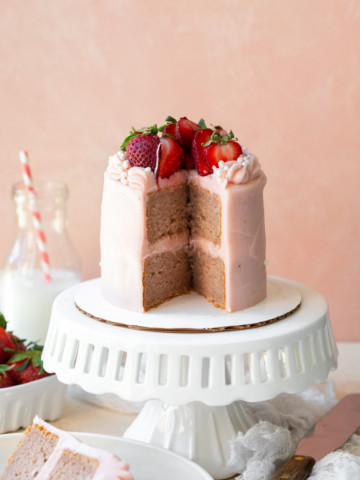

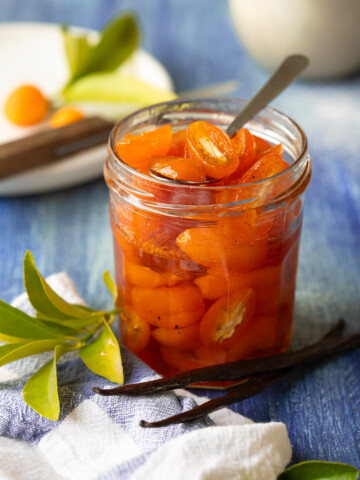
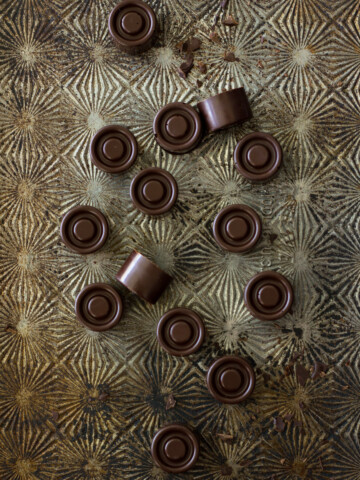
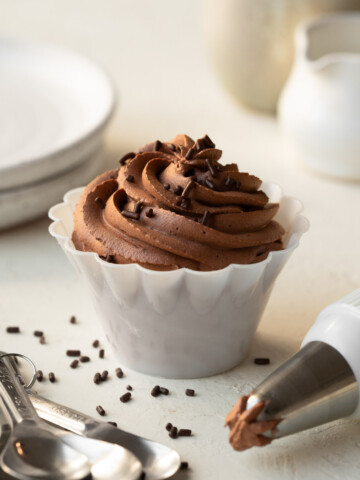
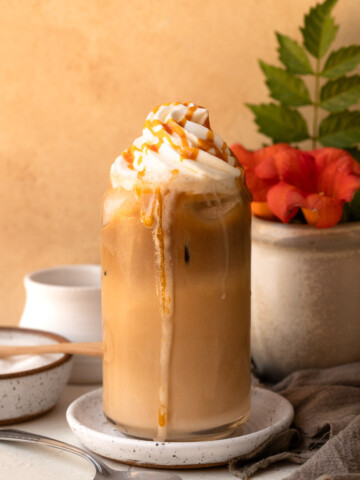

Comments
No Comments